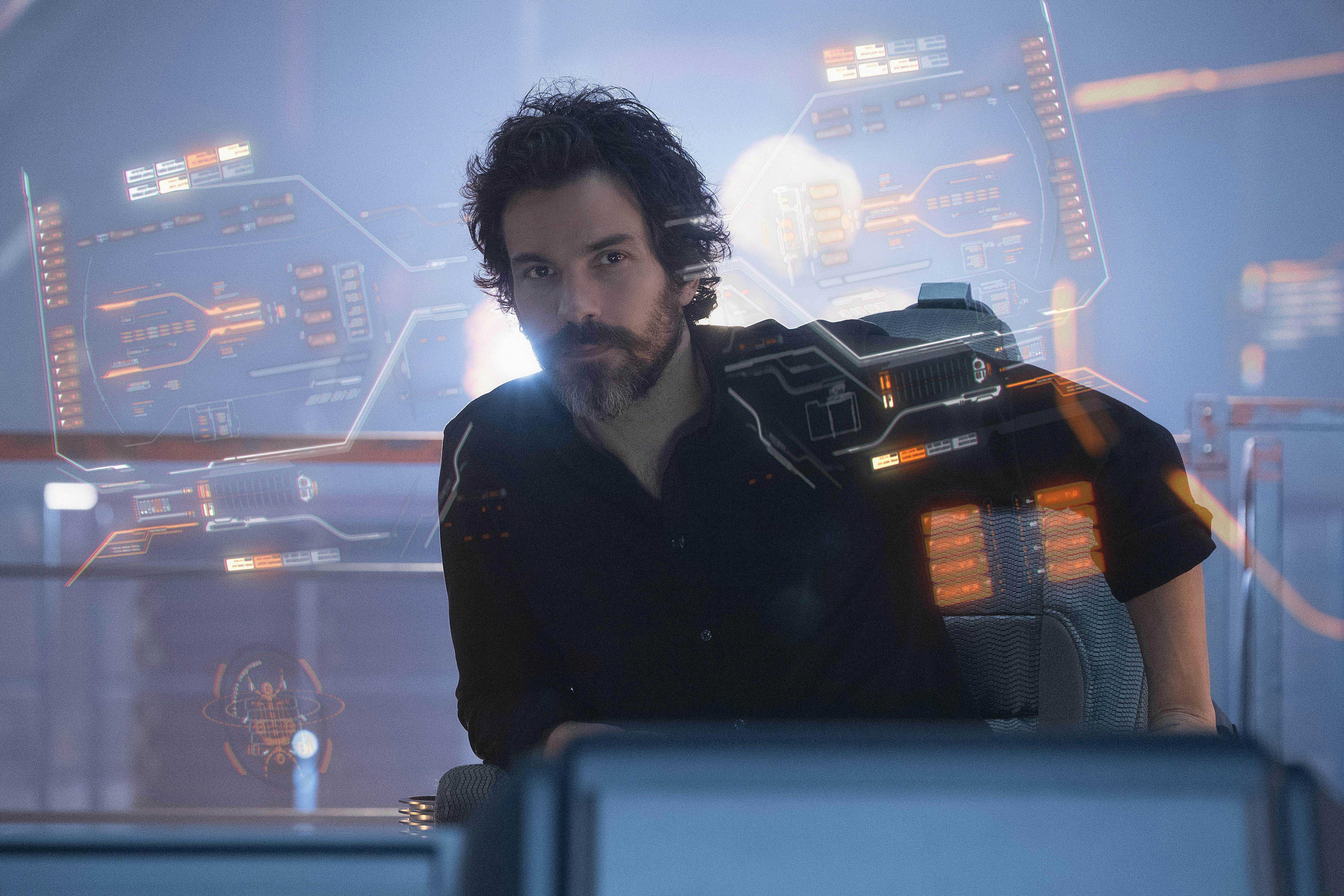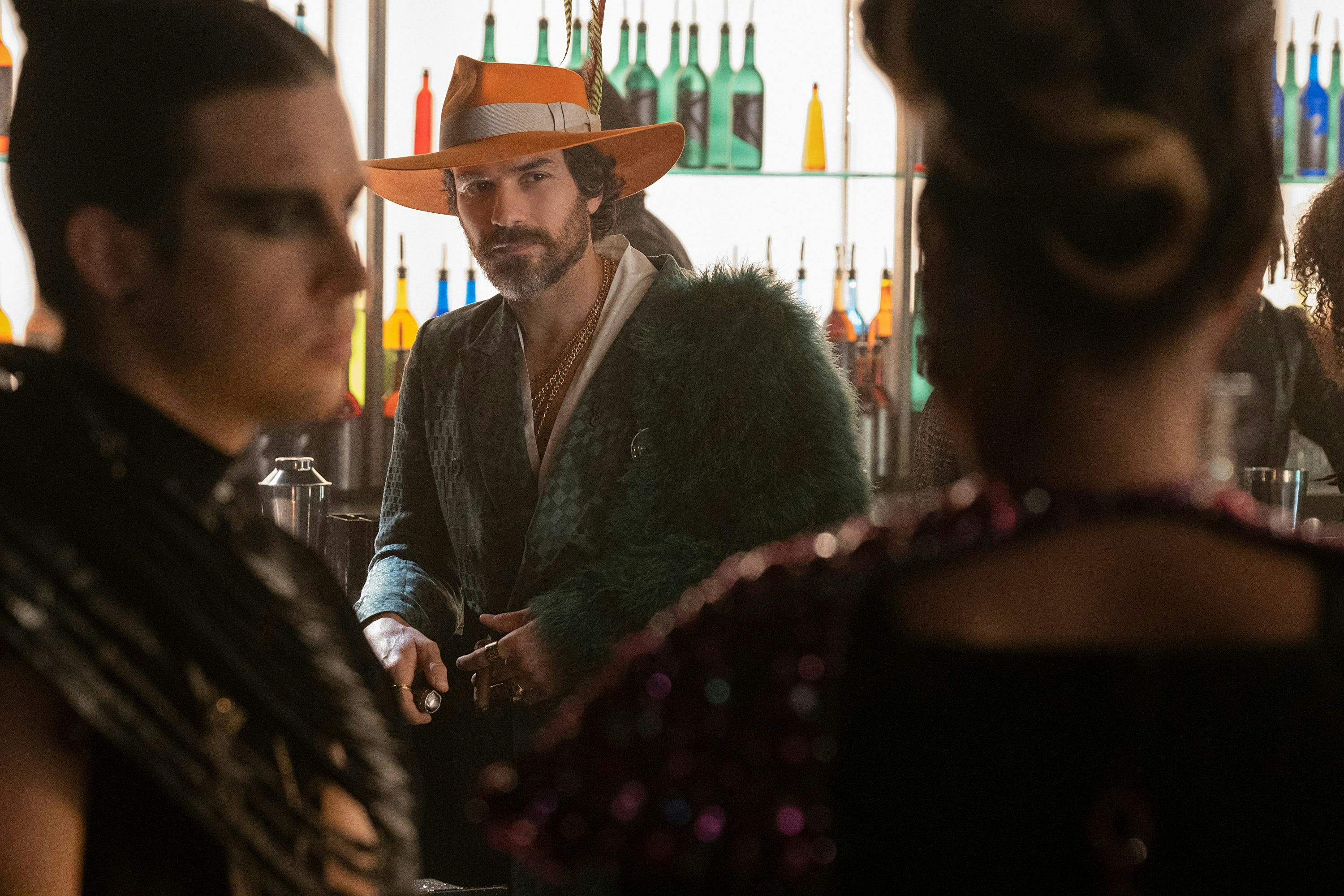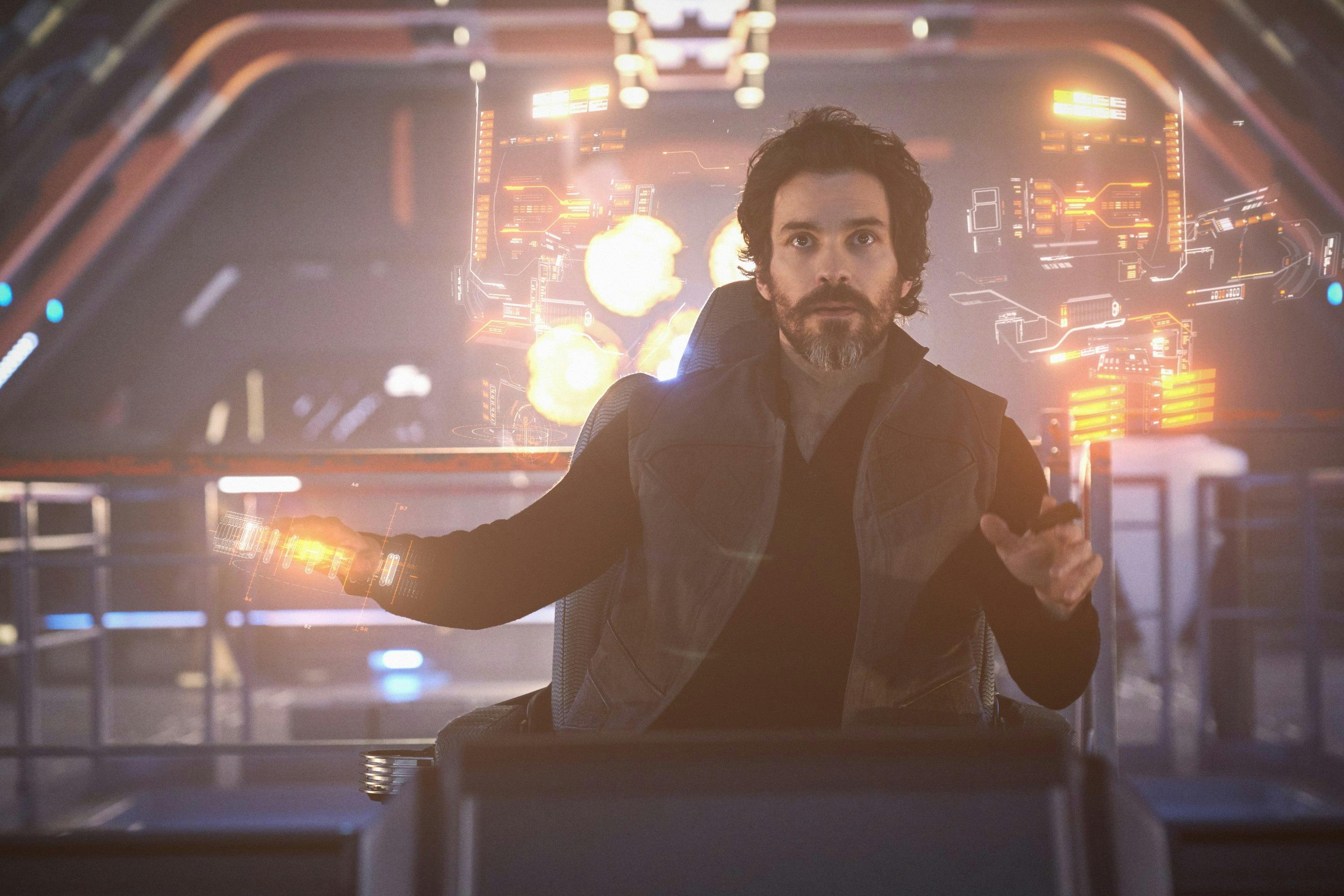Published Oct 5, 2022
The Importance of Cristóbal Rios
Exploring Star Trek's ever-changing approach to on-screen representation.

StarTrek.com
Diversity and inclusion have been cornerstones of the Star Trek universe since the franchise’s humble beginnings. Star Trek: The Original Series, which initially aired at the height of both the Civil Rights Movement and the Cold War, famously had a Black woman, an Asian man, and a heavily-accented Russian as supporting characters (which in the '60s, was a revolutionary act).
While far from perfect, Star Trek has always thrived to be a shining example of what humanity, and popular culture, could and should look like. The show has always tried to live up to that old Vulcan edict of “infinite diversity in infinite combinations.”
Meet the New Characters of Star Trek: Picard
Despite the franchise’s commendable commitment to racial and gender diversity, it is rare to have human characters in Star Trek whose individual cultural heritage and ethnic background is truly central to their personhood. There are exceptions of course — Sisko, O’Brien, and Keiko come immediately to mind — but on the whole, Trek’s humans are just that, humans. Sure, they all come from someplace — Kirk is famously from Iowa, and Janeway from Indiana — but it’s rare that Trek meaningfully differentiates between the many and varied cultures of our home world. For example, we can count the number of times humans speak an Earth language other than English in the franchise’s 50+ year history. In Star Trek, no matter where on Earth you’re from, you are first and foremost human.

StarTrek.com
I’m first-generation American. My father, born in Cuba, emigrated with his family to Miami when he was three-years-old. My mother, born and raised in Venezuela, moved to the US in her 20s when she married my dad. While my father grew up in the US and is American, he’s always been connected to his Cuban heritage (it’s hard not to be when you’re from South Florida). This, compounded with my mother’s insistence in having a Spanish-speaking household, meant I very much felt a child of three wonderfully compatible cultures; ropa vieja was as much part of my upbringing as arepas and grilled cheese.
I’ve loved Star Trek since that fateful day in 1991, when I was nine and watched Star Trek VI: The Undiscovered Country at the drive-in. How diverse the characters were, irrespective of the Star Trek series, has never been lost on me (even at a young age). Despite this, I personally never saw myself — or someone like me — walk the corridors of either a 23rd or 24th Century starship. No main Star Trek character originated from or celebrated a Hispanic or Latin heritage. Did anybody in the 24th Century speak Spanish? It is, after all, one of the most spoken languages on Earth in the 20th and 21st Century. Now this in no way shape or form impacted my love (some might say obsession) with the franchise. But I can’t lie and say that it wasn’t something I periodically didn’t think about. When I played Star Trek as a kid, there was always a Commander Miranda that looked and sounded like me at the helm of a starship. But this all changed when we met Cristóbal Rios.
Rios was a revelation. Introduced in Star Trek: Picard’s third episode, “The End is the Beginning,” Rios was unlike any main character we’d met before. To be clear, a jaded, rebellious ex-Starfleet officer was nothing new (arguably half of Voyager’s main cast fits this description). But a version of that character that was Chilean, played by a Latinx actor named Santiago Cabrera, who spoke Spanish on-screen regularly, and had an accent when speaking English, certainly was.

StarTrek.com
I can’t quite describe the smile I had when we first heard Rios speak Spanish on-screen — nine-year-old and 38-year-old me beamed enthusiastically. Rios curses (appropriately, one might add) in Spanish. His ship is named La Sirena (Spanish for mermaid). Emmet, his Emergency Tactical Hologram, also speaks and curses in Spanish. And he uses a classic Spanish nursery rhyme (one that most Spanish speakers would recognize, "Arroz con Leche") to override La Sirena’s controls. This is a character whose cultural heritage and background is not simply window dressing, but is, in fact, central to who they are as a person. It may have taken 29 years, but that version of Commander Miranda that I so wanted to see when I was a kid, was finally walking around a starship. The fact that he was played with such gusto, depth, and charm by Cabrera was just pure icing on the cake.
The Alex Kurtzman era shows — Star Trek: Discovery, Picard, and Lower Decks — approach representation in a far more nuanced way than any previous Trek. Not only do we have human characters, like Rios and Captain Georgiou, whose cultural heritage is woven into their personhood, but we’re witnessing Trek’s first complex gay relationship play out. Federation starships are regularly given non-Anglicized names (the U.S.S. Shenzhou, the Ibn Majid, the Zheng He), and we have not one, but two shows, whose leads are Black women.
And that’s just in front of the camera; behind-the-scenes, Trek is also becoming more diverse — with women and people of color increasingly in leadership roles, such as Hanelle M. Culpepper becoming the first Black woman to direct a Star Trek pilot (Picard’s “Remembrance”). How Star Trek showcases humans is evolving. We don’t just have humans now; we have humans with individual cultural traits, traits that serve to celebrate the rich and diverse cultural backgrounds of our planet and of an ever-increasing international audience for the franchise.

StarTrek.com
Representation matters. Nuanced representation matters. No culture, no group is a monolith. Kids of all shapes, sizes, colors and backgrounds should see themselves represented on-screen. Years ago, at the British Film Institute’s 50th anniversary of Star Trek celebration, I had the pleasure to sit down with Nichelle Nichols to hear firsthand her story of how Martin Luther King Jr. personally told her not to leave Star Trek: The Original Series (something she was contemplating at the time). Dr. King told Nichols how important it was for America to see a Black woman in uniform on the Bridge of the Enterprise.
To me, while personally very important (and gratifying), the character of Rios symbolizes a renewed franchise commitment to a now 50+ year legacy of diversity and inclusion. A commitment that is appropriately more nuanced, constantly learning, and just as important now as it was in the 1960s.
This article was originally published on September 14, 2020.
Carlos Miranda (he/him) is the CEO of Social Misfits Media, a London-based digital agency. Carlos, as obsessed with coffee as he is sci-fi, loves blogging about Star Trek in his spare time. Follow him on Twitter: @doublemacc.
Star Trek: Picard streams exclusively on Paramount+ in the U.S. and is distributed concurrently by Paramount Global Distribution Group on Amazon Prime Video in more than 200 countries and territories. In Canada, it airs on Bell Media’s CTV Sci-Fi Channel and streams on Crave.
Star Trek: Discovery currently streams exclusively on Paramount+ in the U.S. Internationally, the series is available on Paramount+ in Australia, Latin America and the Nordics, and on Pluto TV in Austria, France, Germany, Italy, Spain, Switzerland and the United Kingdom on the Pluto TV Sci-Fi channel. In Canada, it airs on Bell Media’s CTV Sci-Fi Channel and streams on Crave. Star Trek: Discovery is distributed by Paramount Global Distribution Group.
Star Trek: Lower Decks streams exclusively in the United States and Latin America on Paramount+, on Amazon Prime Video in Australia, New Zealand, Europe, Japan, India and more, and in Canada on Bell Media’s CTV Sci-Fi Channel and streams on Crave.
Stay tuned to StarTrek.com for more details! And be sure to follow @StarTrek on Facebook, Twitter, and Instagram.

